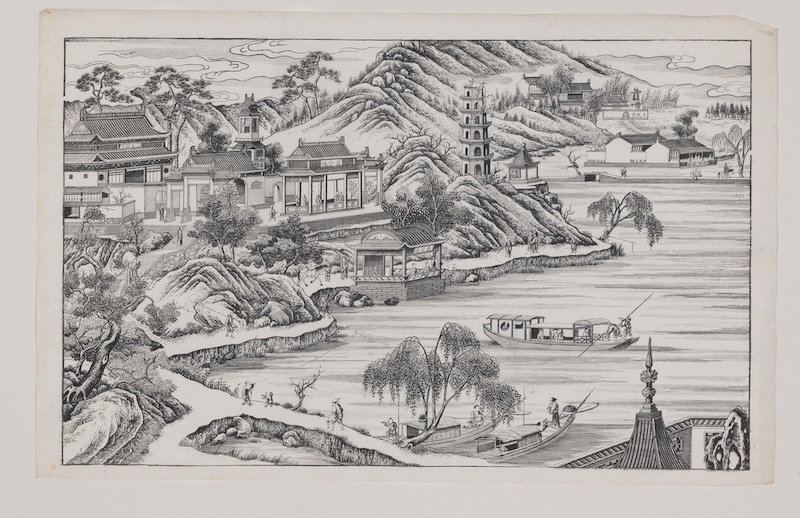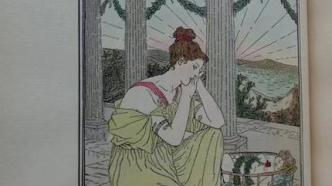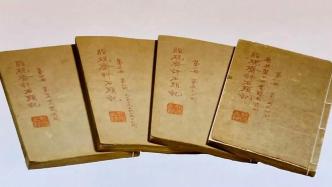
Zhi Yanzhai's re-evaluation of the 16-chapter edition of The Story of the Stone, commonly known as the Qianlong Jiaxu Zhi edition, is an important source for the study of "Dream of Red Mansions". The Jiaxu edition was originally collected by Hu Shi, with 1 letter and 4 volumes. On the title page, there is Hu Shi's handwriting "Every word seems to be blood, ten years of hard work is unusual." Later there were inscriptions and postscripts by Hu Shi, Liu Quanfu, Yu Pingbo and others. This article tells the story of the historical documentary value behind the Jiaxu version and how it was collected by the Shanghai Museum.
Scholars who study "A Dream of Red Mansions" cannot bypass Zhi Yanzhai, and those who study Zhi Yanzhai cannot bypass several manuscripts of "Zhi Yanzhai's Commentary on the Story of Stones". That is, the Jiaxu edition of Qianlong's "Zhiyanzhai's Re-evaluation of Stones" (the nineteenth year of Qianlong, 1754), the Jimao edition of "Zhiyanzhai's Re-evaluation of Stones" (the twenty-third year of Qianlong's reign, 1759), the Qianlong Gengchen edition This book is "Zhi Yanzhai's Re-evaluation of the Story of Stone" (the 25th year of Qianlong's reign, 1760).
Reviewing the collection status of several manuscripts of "Dream of Red Mansions", there is this record: the Jiaxu version was collected by Hu Shi and is now in the Cornell University Library; the Jimao version was originally collected by Dong Kang and is now in the Ancient Books Department of Beijing Library; Gengchen Originally collected by Xu Zhenxiang, now in the Library of Peking University.
Domestic scholars have done a lot of collation and research on the Ji Mao version and the Gengchen version, and have published special works. Especially the Ji Mao version, which was photocopied and published by the Literary Ancient Books Publishing House in 1955, has a wide readership. As for the Jiaxu version, it is only known that it was collected by Hu Shi, and little is known about other circumstances.

1 letter, 4 volumes, inscribed by Hu Shi, Hu Shi’s old collection, "Zhiyanzhai Re-Evaluation of Stones"
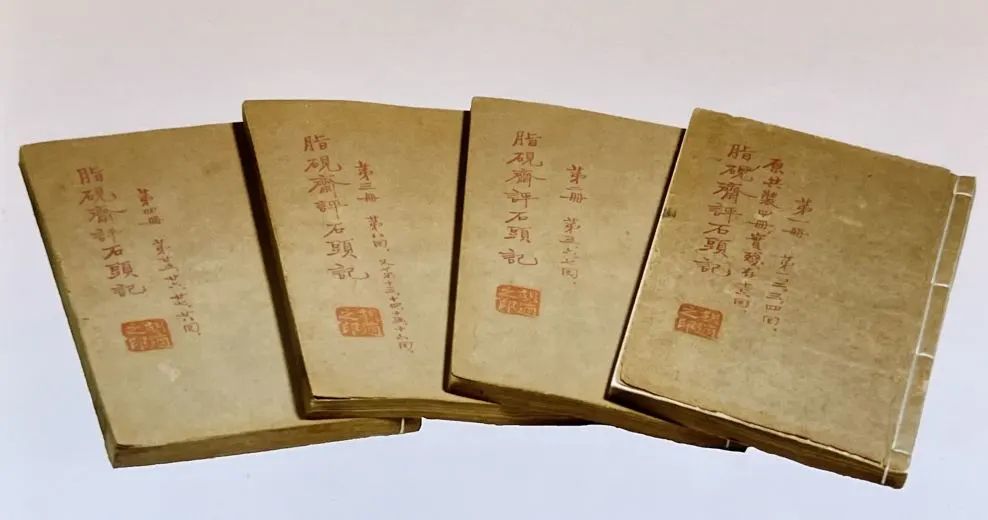
Hu Shi’s old collection of 4 volumes of "Zhi Yanzhai Re-evaluation of the Story of Stone", the cover title and volume number are written by Hu Shi
How did Hu Shi acquire the Qianlong Jiaxu edition of "Zhi Yan Zhai's Commentary on the Stone" in 1927? We know from Hu Shi’s writings that when he came back from abroad, Hu Xingyuan, the collector of the book, wrote to him saying that there was a copy of "Zhi Yanzhai's Commentary on the Stone" that he was willing to transfer, but only sixteen chapters, totaling four, were left. Daben, Hu Shi thought that the re-evaluated "The Story of the Stone" was of little value, so he did not reply. At this time, an advertisement for the Crescent Bookstore jointly opened by Xu Zhimo, Hu Shi, and Shao Xunmei was published. Hu Xingyuan sent the book to Crescent Bookstore and handed it over to Hu Shi. Hu Shi read it once and was "convinced that this was the oldest copy of "The Story of the Stone" in the country, so he paid a high price to buy it."
Hu Shi had already studied "Dream of Red Mansions" before getting the "Jiaxu Edition". There were several comments on "Dream of Red Mansions" at that time. One commentator believes that "A Dream of Red Mansions" was written for Qing Shizu and Dong's concubine Xiaowan. Dong Xiaowan, a famous courtesan in Qinhuai, was robbed and brought to Beijing as a concubine by the emperor of the Qing Dynasty. She was favored by the ancestor of the Qing Dynasty and made a noble concubine. After Concubine Dong's death, the Qing Shizu went to Mount Wutai and became a monk. Jia Baoyu in "A Dream of Red Mansions" is the Qing Shizu, and Lin Daiyu is Dong Fei. The representative of this school is Wang Mengruan's "A Dream of Red Mansions". The second group, represented by Cai Yuanpei, believes that "A Dream of Red Mansions" is a political novel from the Kangxi Dynasty of the Qing Dynasty and an elegy for the Ming Dynasty. Its representative is "The Story of the Stone". There is also a school that generally holds that "A Dream of Red Mansions" records the events of Nalan Chengde, and this school still has some influence. At Xia Yan's house, I saw more than ten volumes of correspondence written by Nalan Chengde to Zhang Jianyang. There were inscriptions and postscripts by Qi Gong and Ye Gongchuo at the back of the volume. They still believed that Jia Baoyu in "A Dream of Red Mansions" wrote Nalan Chengde.
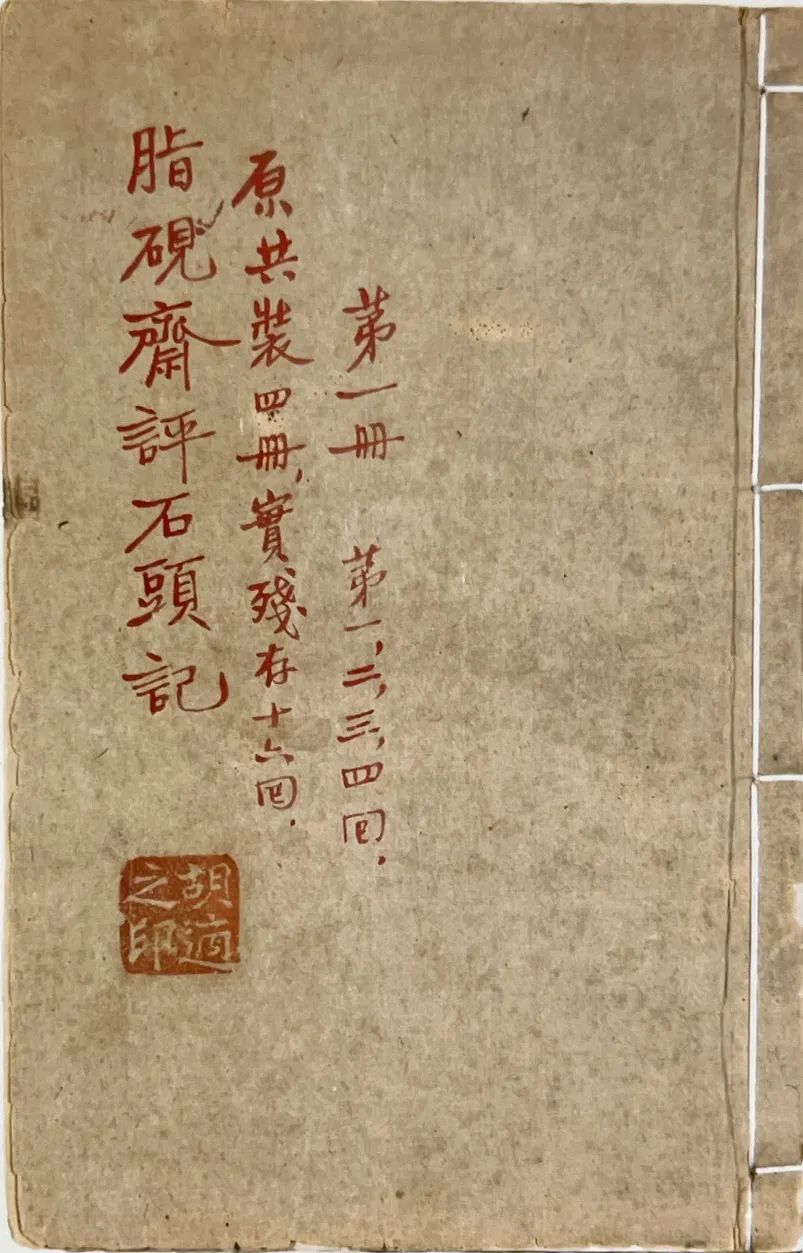
The title and volume number of the book written by Hu Shi on the cover of the first volume of "Zhi Yanzhai Re-evaluation of the Story of Stone"
In 1921, Hu Shi wrote "A Textual Research on "A Dream of Red Mansions"", which denied all three comments mentioned above. He proposed that "A Dream of Red Mansions" is an autobiography of the author Cao Xueqin, and it is a self-narrative book that conceals the true story. The two precious jades are the incarnation of Cao Xueqin himself, and the two houses of Zhen and Jia are the shadows of the Cao family back then." As a result, the study of "A Dream of Red Mansions" has entered a new historical stage, which is called "New Redology". At that time, Lu Xun, Qian Xuantong, Mao Dun, Ye Shengtao, etc. were all involved in this controversy. When I visited Gu Jiegang back then, Mr. Gu told me about the time when he was looking for materials for Hu Shi and studying "Dream of Red Mansions" together. He also said that he once left a packet of manuscripts on a rickshaw, and Ye Shengtao helped him find them.
Hu Yong used hundreds of thousands of words to research the novel "Dream of Red Mansions", which is nothing more than a practical application of the ideological methods of Huxley and Dewey. Use some "profound and famous" examples to tell people how to think. At that time, some people criticized "A Textual Research on "A Dream of Red Mansions"" for insufficient evidence. Hu Shi found the Jiaxu version of "Zhiyanzhai's Commentary on the Stone", which proved that his hypothesis was correct.
From 1927, Hu Shi purchased the Jiaxu edition of Qianlong's "Zhiyanzhai's Commentary on Stones" to 1948, when Zhou Ruchang borrowed it and copied a copy. In the past 20 years, except for Hu Shi who wrote an article "New Materials for Research on "Dream of Red Mansions"", few people have mentioned this "Jiaxu Edition", and few people have seen it. When Hu Shi left Beijing for Nanjing in 1948, he only brought two books with him. One was the "Jiaxu Edition". Zhou Ruchang did not say what the other book was. It is actually a clear copy of Hu Shi's father's writings. Hu Shi saw that Ye Gongchuo had compiled and printed the poems of his grandfather and father, so he wrote to Ye saying that he had failed to publish his father's poems and felt guilty in his heart.

"Zhi Pi" in the "Jiaxu Edition" of "The Story of the Stone"
When Hu Shi went to the United States, he brought with him the Jiaxu edition of Qianlong's "Zhiyanzhai's Commentary on the Stone". From then on, there were only copies copied by Zhou Ruchang in China. In 1950, Columbia University in the United States made three sets of microfilms for Qianlong's Jiaxu version of "Zhi Yan Zhai's Commentary on the Story of the Stone". One set was given to the Columbia University Library, one set was given to Hu Shi, and one set was given by Hu Shi to Wang Jizhen, who translated "Dream of Red Mansions". Later, Hu Shi gave Lin Yutang the microscopic films he had kept.
In 1961, the anniversary of Cao Xueqin's death, Taiwan made 500 photocopies of Qianlong's "Jiaxu Edition". Hu Shi wrote a long postscript and reviewed the mistake of "almost missing the mark". "So this is the oldest book in the world." If the manuscript of "A Dream of Red Mansions" would not be in my hands, it would probably be buried forever." In order to commemorate the 200th anniversary of Cao Xueqin's death, the Shanghai Editorial Office of Zhonghua Book Company photocopied and published it based on the Taiwan photocopy. An "explanation" was added to the book: "Zhi Yanzhai's re-evaluation of the 16-chapter version of The Story of the Stone, commonly known as the Qianlong Jiaxu Zhi Commentary, is an important material for the study of "Dream of Red Mansions". The original copy was stolen by Hu Shi before liberation. Last year It was photocopied and published in Taiwan in May. Therefore, the book is needed for the research of our academic circles. I specially copied it to remove all the traces of Hu Shi's smearing, and added some missing words. It was divided into four volumes according to the original version in order to restore its original appearance. . Shanghai Editorial Office of Zhonghua Book Company, May 1962." I bought a set once and still have it on my shelf.
To commemorate the 200th anniversary of the death of Cao Xueqin, there was a lot of excitement in the red academic circles. Wu Wen and Liu Qun, reporters from Wenhui Newspaper in Beijing, visited Zhou Ruchang and published "Where is the Grand View Garden in Beijing" under the name of "Wu Liu, our reporter in Beijing", describing Beijing. The scene of the Red Academy looking for the Grand View Garden. In 1975, Shanghai People's Publishing House photocopied Qianlong's "Jiaxu Edition", which was an internal supply. I held an "internal book purchase certificate" and went to the "internal supply cabinet" of Xinhua Bookstore at the intersection of Fuzhou Road and Henan Road to buy a copy each of Zhuang Mu Tang Xie Zhiliu and Lai Yanxie Huang Shang.
Out of curiosity, I have always wanted to know what kind of words Hu Shi "smeared" on the Qianlong "Jiaxu Edition"? In 1980, I heard that old man Cong Bi, Zhang Boju, had an original Taiwanese photocopy of the Qianlong "Jiaxu Edition" in his possession. I took the photocopy to Beijing with the intention of copying the "Hu Shi's obliterated" text that had been deleted by the Shanghai editor of Zhonghua Book Company. Transcript. When I arrived in Beijing, I was summoned back to Shanghai before I went to see Cong Bi. In 1980, the first international "Dream of Red Mansions" symposium was held in the United States, and the Qianlong "Jiaxu Edition" collected by Hu Shi was displayed at the meeting. Several Chinese experts on red science who were invited to participate only glanced at this book and failed to read it. The Jiaxu edition of "Zhiyanzhai Stone Chronicles" collected by Hu Shi was originally stored in the Cornell University Library in the United States. Where is it now stored? It’s not just me, even the Chinese red academic community has a clear understanding of Qianlong’s Jiaxu edition of “Zhiyanzhai’s Commentary on the Stone”.
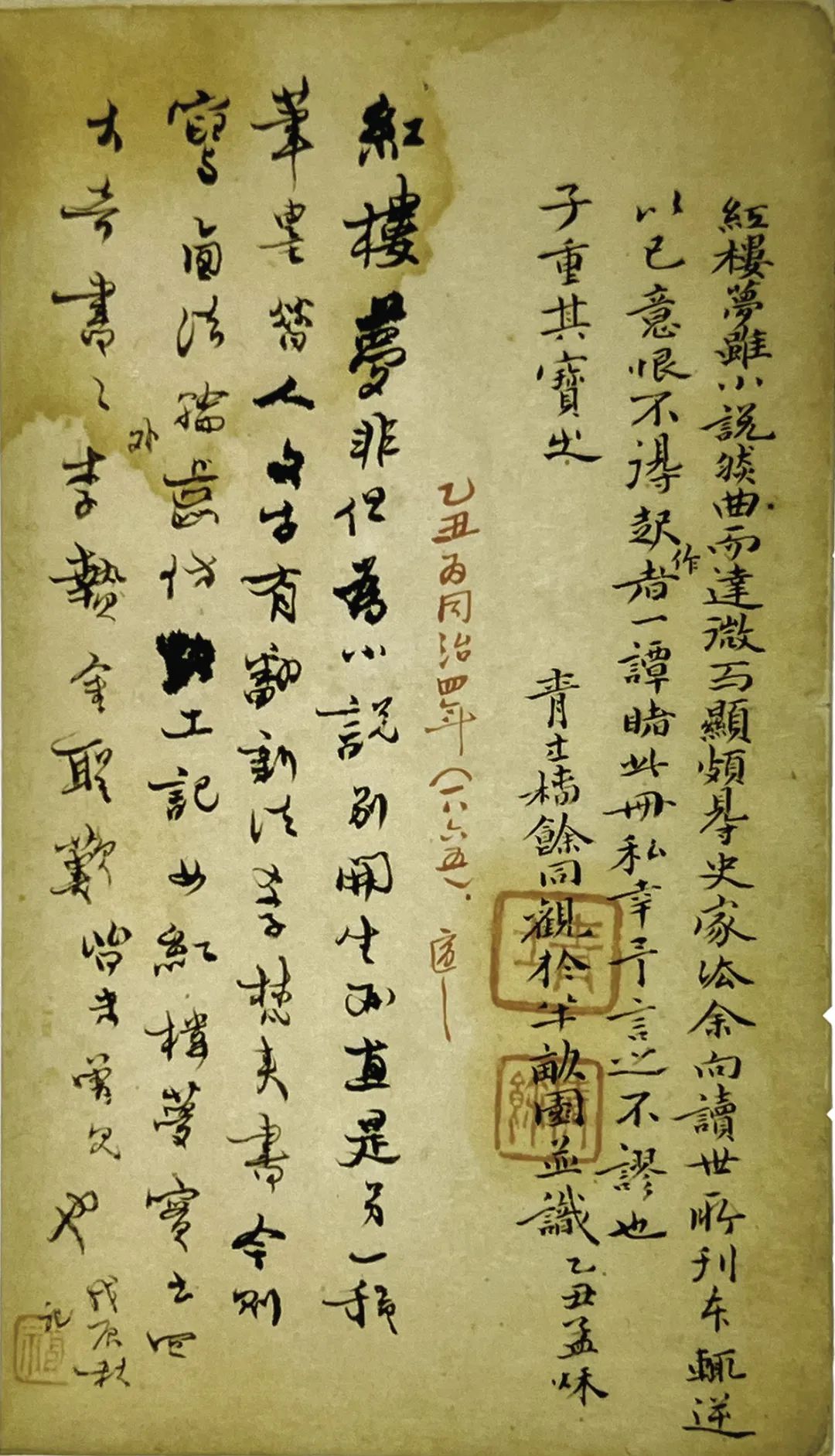
Postscripts by Qingshi (Pu Wen Siam), Chun Yu (Pu Wen Chang) (the fourth year of Tongzhi, 1865), and Liu Quanfu (the seventh year of Tongzhi, 1868)
In 2005, I did some research on collections and donations from collectors at the Shanghai Museum, and at the same time viewed ancient calligraphy and paintings donated by collectors. One day in the spring of this year, I walked into Mr. Wang Qingzheng's office as scheduled. He told me that he had recently purchased a rare book from the United States. As he spoke, he placed a book with a blue envelope in front of me. The cover of the letter was inscribed: "Zhi Yanzhai's Re-evaluation of the Story of Stones." I opened it and saw that there were four volumes in the letter. The cover of the first volume read, "Zhi Yanzhai's Story of Stones was originally bound in four volumes. It actually contains sixteen chapters. The first volume is "Volume 1, 2, 3, and 4" have "Hu Shi's seal" on the seal. The other three volumes all have titles inscribed by Hu Shi. Each volume has several chapters. On the title page, there is Hu Shi's handwriting "Every word seems to be blood, ten years." Hard work is unusual.” Seeing this, I felt a little excited. It is really the Jiaxu edition of "Zhiyanzhai's Commentary on the Stone" collected by Hu Shi during the Qianlong period. Because I couldn't take the original book out, I had to go to Wang Qingzheng's office every day to read it. There were rules in front of the book, the words "Zhiyanzhai" on the margin, and comments and criticisms written by Zhiyanzhai in ink on the eyebrows and between the lines. It involves Cao Xueqin's family background, the year of Cao Xueqin's death, the plot and life materials of "Dream of Red Mansions", and clues to the plot after the 80th chapter, etc. Among them, the most important thing is that the first chapter has a total of 429 words from "talking and laughing" to "suddenly becoming", which are not available in all editions and are unique to this book. Without these four hundred words, the storyline of the stubborn stone turning into jade would be interrupted, and the following story would lose its clue. At the end of the first volume, there is Zhou Ruchang's postscript: "Mr. Zizhi, who was born in June of the 37th year, borrowed it to read with brother Huchang for two months, and made a copy of it. Zhou Ruchang would like to know it, 37th, 10th, and 24th."

"The Story of the Stone" "Jiaxu Edition" by Hu Shi (1948)
There are many epigraphs and postscripts at the back of the book, one of which says: "A Dream of Red Mansions not only brings a new dimension to the novel, but also a different kind of writing... The Dream of Red Mansions is actually a novel that Li Zhi and Jin Shengtan have never seen outside the four great novels. Wuchen Qiu Ji". Seal "福". "Fu" refers to the original collector Liu Quanfu. Hu Shi Youmei Pi: Daxing Liu Quanfu, courtesy name Zizhong, was a bibliophile in Beijing. He first wrote this book in Guihai, the second year of Tongzhi (1863), and he wrote it on May 27th, which should be in the same year. His last post was in Wuchen, the seventh year of Tongzhi (1868). Liu Quanfu and his father Liu Kuanfu are both bibliophiles. Ye Changchi recorded in "Poems of Tibetan Records": "The Brick Hall of the Gentleman in Hejian, the Back Garden of Sun Park in the Factory. The Yue Lao New Book Ziyun Yun, Changge Liao became the Xumei Village." It is about the Liu family and his son. Because Liu received the "Junziguan Brick" from Hejian King, he named his residence "Junziguan Brick Hall", also known as "Zhuanzhaozhai", and his residence was the "Garden Back Garden" of Sun Chengze's former residence.
There is no documentation on how Qianlong's Jiaxu edition of "Zhiyanzhai's Commentary on Stones" dispersed from the Liu family and ended up in the hands of Hu Xingyuan.
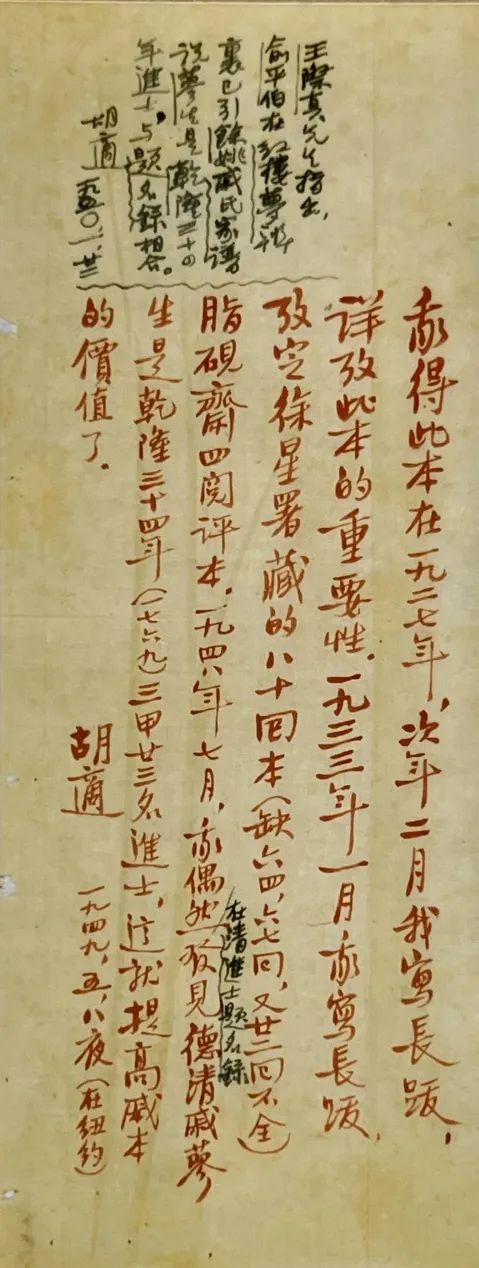
"The Story of the Stone" "Jiaxu Edition" Hu Shi's postscript (1949, 1950)
Hu Shi also has a long postscript, "There are three copies of the eighty-chapter Stone Chronicles in existence. One is the Qi Liao Sheng edition with the stone seal of Youzheng Bookstore, and the other is the eighty-chapter banknote edition collected by Xu Xing. I have the long postscript and one. Sixteen chapters of Liu Quanfu's old collection were collected for me (I also have a long postscript). Among the three, this fragment of mine is the earliest, so it is the most precious because it is the original manuscript of Cao Xueqin. This year, Zhou Ruchangjun (student of Yenching University) ) and his brother borrowed this copy from me to make a copy. I hope that this fragment will have the opportunity to be photocopied and circulated in the future. Hu Shi, 1948, 12, 1."
There is an inscription and postscript written by Yu Pingbo at the back of the book, which says: "This is the first stone record I have ever seen. Zhiyanzhai was the author at the same time, so every time I look back at the present and recall the past, I feel overwhelmed with emotion. However, the value of this book is also debatable: It is not the original version of Zhi Ping, but was recorded by later generations, and there are three proofs..." There are also several inscriptions and postscripts by predecessors and Hu Shi, so I will not copy them one by one here.
At the end of the transcription, Wang Qingzheng reminded me in particular: There is a contract and Mrs. Hu is still alive, so she cannot write articles to promote it. Hu Tai is Hu Shi's daughter-in-law, Hu Zuwang's wife, Hu Zeng Shuzhao.
Later, I found out from another letter written by Hu Shi to Zhou Ruchang that Hu Shi was not very satisfied with Yu Pingbo's inscription and postscript. The letter said, "Mr. Zishu is an authority on the history of Chinese novels. I hope you will always get close to him. He is also very fond of it." Pay attention to the anecdotes of "Dream of Red Mansions"... You can ask Mr. Zishu to read the original and revised versions of the fat version. If he is happy to write a postscript, it will definitely be more valuable than Mr. Pingbo's." Zishu is Sun Kai. No. .

"Fanli" on the homepage of "Jiaxu Edition" of "The Story of the Stone"

On the eighth page of "The Story of the Stone" there are 15 words "Zhizhiyanzhai Jiaxu copy and re-evaluate and still use the Story of the Stone", so it is called the "Jiaxu version". "Jiaxu" is the nineteenth year of Qianlong (1754)
In July this year, Gu Xiangyu, the former deputy director of the Shanghai Museum, and Zhang Zining, the former director of the Chinese Calligraphy and Painting Department of the Freer Museum of Art in the United States, came to visit Wutong. When old friends meet and talk, they are always inseparable from past topics. At that time, they talked about Hu Shi How the Jiaxu edition of "Zhiyanzhai's Commentary on Stones" from the Qianlong reign of the Qing Dynasty was collected by the Shanghai Museum.
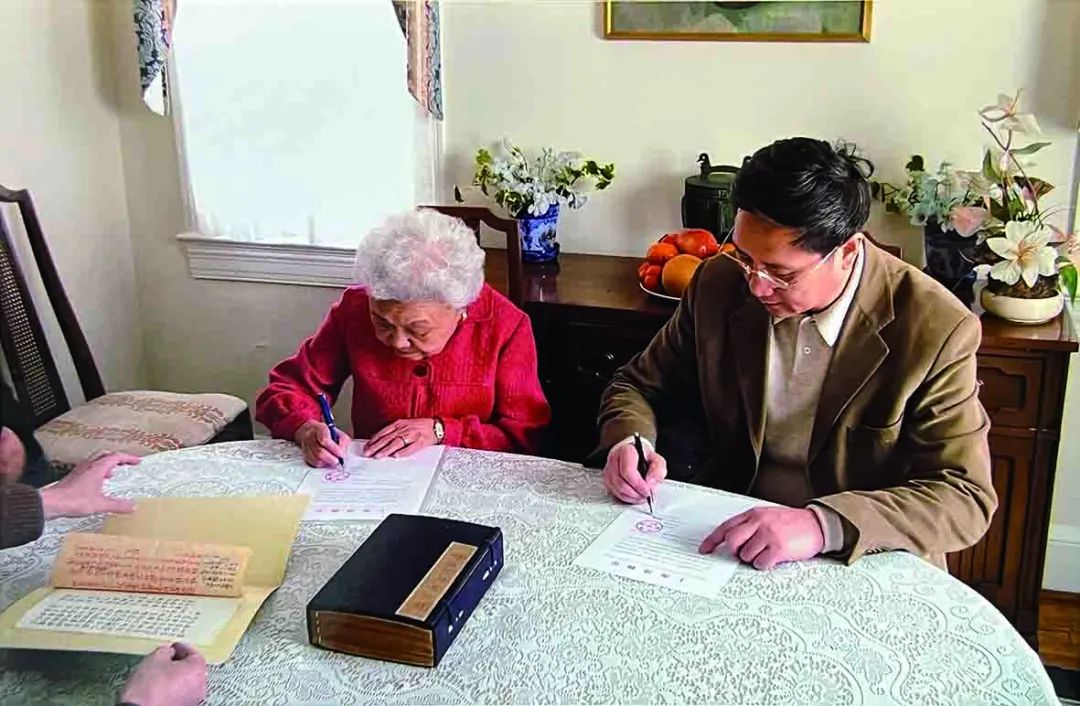
Gu Xiangyu and Hu Zeng Shuzhao signed the "Jiaxu Edition" transfer agreement of "The Story of the Stone" on behalf of the Shanghai Museum and Hu Shi's family respectively (2005.2.21)
In 2004, Hu Zuwang was admitted to the hospital due to illness. As his condition worsened and all the family's savings were used up, his wife Hu Zeng Shuzhao had no choice but to sell Hu Shi's old collection of "Zhiyanzhai's Commentary on the Stone" from the Jiaxu edition of Qianlong in the Qing Dynasty. Then I suggested to my friend Zhu Yinying to discuss finding a suitable buyer. Zhu Yinying, a friend of the Freer Museum, approached Gu Xiangmei and contacted the Shanghai Museum to see if it was interested in acquiring it. Gu Xiangmei was originally a calligraphy and painting restorer at the Shanghai Museum. She accompanied her to the United States and entered the Freer Museum. She is Gu Xiangyu's sister. The Shanghai Museum was willing to purchase it, but Hu Zuwang was unable to send the book to Shanghai due to illness, so Gu Xiangyu, Xu Yongxiang, and Gu Yinhai from the Shanghai Museum went to the United States to handle the purchase.
The U.S. estimate of the Qianlong Jiaxu edition of "Zhi Yanzhai's Commentary on the Stone" is over $1 million. The two parties negotiated very amicably and finally transferred it to the Shanghai Museum for US$830,000. In this way, a rare book with an epoch-making effect in the study of "Dream of Red Mansions" entered the Shanghai Museum through the road of folk friendship, realizing Hu Shi's wish during his lifetime. "My original copy will also be collected by the public in the future."
September 2023 at Wutong Renjia
(This article is reproduced from Museum China)
